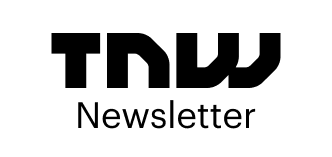
Are you ready to bring more awareness to your brand? Consider becoming a sponsor for The AI Impact Tour. Learn more about the opportunities here.
Cloud computing giant Amazon Web Services (AWS), has until recently has been perceived as playing catch-up with its rivals Microsoft Azure and Google Cloud in the emerging field of generative AI.
But over the past two days at its AWS Re:Invent conference, Amazon has taken off the gloves against its competitors, in particular Microsoft, by announcing a slew of announcements that shows it wants to be the leading player in supporting enterprise companies building generative AI projects.
Today, Swami Sivasubramanian, AWS’s vice president of Data and AI, made a series of announcements during his keynote presentation, following many made yesterday by AWS CEO Adam Selipsky. The big ones yesterday included the Amazon Q assistant, to rival Microsoft’s copilot, and offer enterprise employees all kinds of help with their work.
One way Amazon is seeking to differentiate itself is by offering customers choice. Yesterday Selipsky took a veiled swipe at Microsoft, saying it was dependent on a single LLM company (OpenAI), while Amazon plans to offer access to many providers. AWS does this through its Bedrock service, that supports many of the leading LLMs models, including Claude, AI21, Cohere, and its own models. And Sivasubramanian made several announcements that improve Bedrock’s capabilities, which I’ll get to.
VB Event
The AI Impact Tour
Connect with the enterprise AI community at VentureBeat’s AI Impact Tour coming to a city near you!
Another strategy is to tear down the silos between its various databases, so that enterprise customers can more easily leverage their proprietary data when using LLMs — and AWS showed it badly wants to catch up with Microsoft there. Microsoft has done well by moving forward with its Fabric offering, to remove the need to doing costly and time-consuming data migrations between databases.
With all of that in mind, here are today’s key Gen AI announcements:
1. More LLM choice, especially via Anthropic’s Claude 2.1 model: Through Bedrock, Amazon AWS has already provided enterprise customers access to models like its own pretrained foundation model, Titan, as well as foundation models from third parties, like AI21’s Jurassic, Anthropic’s Claude, Meta’s Llama 2, and Stable Diffusion.
As expected, Sivasubramanian announced more model support of Amazon’s partner, Anthropic, after Amazon’s significant investment in that company in September. He made a big deal about Bedrocks’s support of Anthropic’s Claude models, which are strong for tasks like summarization and complex reasoning. He announced the support of Claude 2.1, the model Anthropic released two weeks ago, which has an industry leading 200K token context window, improved accuracy, and half as many hallucinations than its previous model. AWS becomes the first cloud provider to support Claude 2. He also announced Bedrocks’ support to Meta’s Llama 2, 70B, an open source model – showing AWS’s continued support of open source
2. Support of multi-modal vector embeddings: Vector embeddings is a technology that translates text and other files into numerical representations called vectors. These vectors allow models to more easily understand the relationships between similar words, for example that “cat” is close in meaning to a “kitten.” They allow models to produce more relevant responses to users looking for things. Amazon had previously announced Titan Text embeddings for this, and had used it internally for its product recommendations on Amazon – but it worked only on text.
But Sivasubramanian said companies are asking for multi-modal search capabilities, for example a furniture store might want to let their customers search for a sofa by using an image of something they’re looking for, and multi-modal search can allow that furniture store to serve up the closest looking sofa from its database of thousands of images. They could ask for “show me what works well with my sofa.”
So Sivasubramanian announced today the general availability of Titan Multi-model Embeddings, which make it easier to offer multimodal search and recommendation options within LLMs.
3. Text generation models Titan TextLite and Titan TextExpress are now generally available: TextLite is a light-weight model that is good for text summarization within chatbots, and copywriting, and fine-tuning, and Titan TextExpress is good for open-ended text generation and conversational chat.
4. Titan Image Generator, available in preview mode, produces invisible watermarks for security (see our full, separate story on this): This model enables customers to produce high-quality realistic images for enhancing existing images using simple language prompts. Users can customize the images using their own data to create content that reflects their own brand. It is trained on a diverse set of data to enable accurate outputs, and also is built to mitigate toxicity and bias, Sivasubramanian said.
He said tests with human evaluators gave the model higher scores than competing models. Also, all images generated with the model come with an invisible watermark by default, “designed to help avoid the spread of disinformation…and to be tamper resistant.” He said Titan Image Generator is the first product on the market with such watermarks.
During his keynote, Sivasubramanian used the example of a picture of an Iguana to show off the the model’s editing features. One feature, called “outpainting,” allows a user to replace the background of an image, and in this case Sivasubramanian replaced the plain background with the image of a rainforest. He also showed how he could change the main subject, in this case the Iguana itself, and how you can use natural language to say, change the direction the Iguana is facing.
5. Making retrieval-augmented generation (RAG) easier: Companies are using RAG to allow LLMs to search their own proprietary data stores, but RAG can be complex. Engineers have to convert data into vector embeddings, store these in vector databases, and it can take weeks, if not months. Amazon yesterday announced KnowledgeBase for Amazon Bedrock, to make this easier – letting enterprise users simply point the LLM to the location of their data like an S3 bucket. This way, AWS Bedrock fetches relevant text or documents and does all of the vector conversions automatically. It works with popular vector databases, like Vector Engine, Redis Enterprise Cloud, and Pinecone. And today, Amazon announced support for Amazon Aurora, MongoDB and more databases will be “coming soon.”
6. Model Evaluation on Amazon Bedrock in preview: This is a way for companies to evaluate, compare, and select the best foundation model for their use cases.
7. A Do-it-yourself “agent” app called RAG DIY: Generative AI agents have become popular recently because they can act somewhat autonomously. Agents are AI applications that execute complex tasks by dynamically invoking various APIs, and Amazon has supported this with Agents for Amazon, which was made generally available yesterday.
This morning, Sivasubramanian showcased a hypothetical agent called RAG DIY to show off what agents can do. The LLM-powered RAG DIY assistant, based on Claude 2 within Bedrock, lets people do home and other projects by letting them use natural language questions. Swami gave an example of a woman who wants to replace her bathroom vanity. She can ask the assistant about any type of product, and receive a list of detailed steps, materials and tools, along with permits needed. The assistant leverages the user’s inputs to generate images of the project, by invoking Amazon’s Titan image generator. The RAP DIY app uses multi-modal model embeddings to search its extensive inventory and retrieve all of the products she’ll need for her project. The assistant can provide her a summary of user reviews for any product, by calling upon Cohere’s Command model, which is specialized for summary tasks.
8. Gen AI Innovation Center to help enterprises build custom models: AWS announced the Innovation Center earlier this year, as a way to provide expert help to enterprise companies build foundation models, including data science and strategy expertise. AWS announced that it will provide custom support for building around Anthropic’s Claude models, starting next year, including providing a team of experts to help customize models with fine-tuning using their own data.
9. Sagemaker Hyperpod for model training moves to GA: Increasingly companies are finding that the process for training foundation models can be extremely challenging. It requires huge amounts of data and creating and maintaining expensive clusters of thousands of AI accelerators, writing code to distribute model training across clusters. Hyperpod can do all of this for you, thanks for Amazon’s recent announcements with Nvidia to secure access to the latest GPU clusters. Hyperpod can reduce the model training time by up to 40 percent, AWS said. AWS also announced a slew of other Sagemaker features across the areas of inference, training and MLOps.
10. Significant database integration, including vector support. Amazon offers the broadest set of cloud databases for enterprise companies managing data, but these databases have remained siloed, making it harder for enterprise companies to be able to access them easily with LLMs. Amazon has gotten the message, and is working with a vengeance to break down those siloes, spurred by Microsoft’s touting its Fabric initiative, which some analysts say has given it an edge over Amazon. Amazon has started to invest in this so-called zero ETL vision, which it started to implement last year with the integration of some of its own databases, such as Aurora and Redshift.
Today, AWS announced integration of Amazon OpenSeach and Amazon S3, which lets users analyze and visualize all of their log data in a single place without creating any ETL pipelines. This comes after Amazon announced yesterday zero-ETL integrations between its Redshift lakehouse database and its popular Aurora Postgres, Dynamo DB, and Redis MySQL databases, as well as between DynamoDB and OpenSearch.
But the enterprise desire for integration also includes allowing vector data to be stored and queried in multiple databases. Recently, Amazon added vector search support to Amazon’s Aurora MySQL, a cloud-based relational database. And in July, Amazon launched a vector database capability, Vector Engine, for its OpenSearch Serverless product, in preview mode. Today, this was moved to general availability.
Also today, AWS announced that DocumentDB and DynamoDB, two of its more popular databases, are supported with vector search, and that DocumentDB customers can store their source data and vector data together in the same databases
11. Vector search available for in-memory DB for Redis (preview mode). Sivasubramanian highlighted the need for large security-focused companies like banks to use “ultra fast” vector search for use cases like fraud detection or real-time chatbots. DB for Redis can now store millions of vectors, and offer single-digit millisecond response times to vector queries, he said.
12. Combining Neptune Analytics, now in GA: Sivasubramanian added that customers are looking for ways to leverage graph analytics to analyze interconnected data, and so Amazon is combining vector search with the ability to do do graph analytics to uncover more hidden relationships across data – which can make LLMs even more powerful. Neptune Analytics is an analytics engine for Amazon’s graph database Neptune, and allows data scientists to find insights in Amazon Neptune graph data, or their data lakes on S3, up to “80 times” faster than previously. It stores graph and vector data together. Sivasubramanian gave the example of Snap, a company that uses Neptune Analytics to find billions of connections among its 50 million active users “in just seconds.”
13. Letting third parties perform machine learning on your cleanroom data (preview mode): Amazon announced the ability of customers to share their data with third parties in so-called cleanrooms, and then letting them run machine learning (ML) models on the data to get predictive insights. The service is called AWS Clean Rooms ML. While basic ML modeling is available now, Sivasubramanian said specialized healthcare and other models will be available in ”coming months.”
14. Amazon Q for generative SQL in Amazon Redshift. Amazon Q is an AI-powered assistant that is tailored for a particular business, and was the highlight of the AWS’s announcements yesterday. Amazon today announced Q can support SQL, the main coding language used by customers to query files on a daily basis. Sometimes these SQL queries can be complex, but now users can use Q to turn natural language prompts into customized recommendations for queries, that can be used to analyze petabytes of unstructured data in Amazon’s Redshift lakehouse. It’s available in preview. You’ll also soon to be able to use Q to create data integration pipelines using natural language (something AWS calls Amazon Glue).
VentureBeat’s mission is to be a digital town square for technical decision-makers to gain knowledge about transformative enterprise technology and transact. Discover our Briefings.





